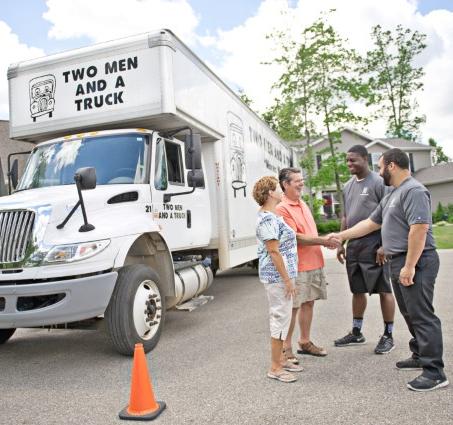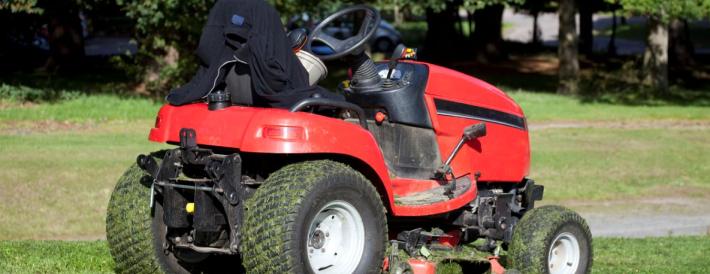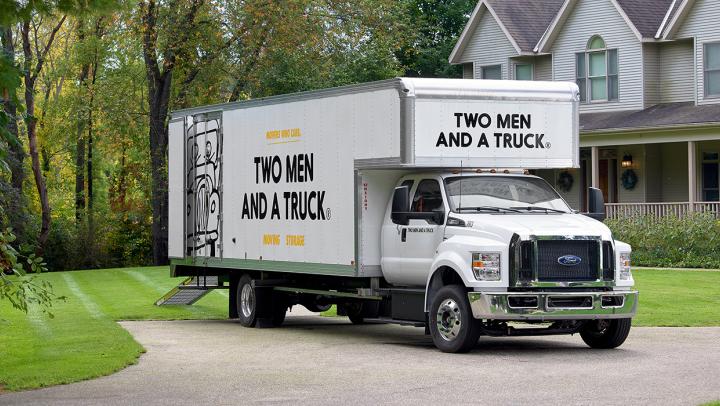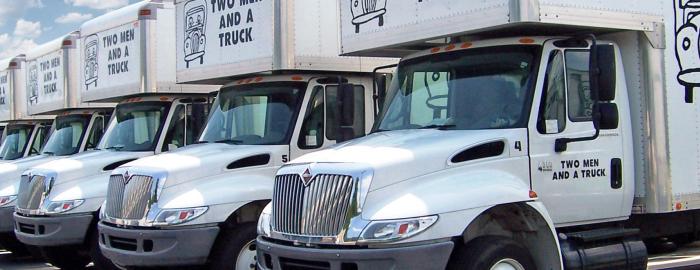Transporting a riding lawn mower can be daunting, but with the right preparation and knowledge, you can ensure your machine arrives safely at its destination. Whether you're moving it to a new home, taking it for maintenance, or delivering it to a new owner, this guide will walk you through the steps to transport your riding lawn mower securely.
At TWO MEN AND A TRUCK®, we specialize in moving heavy and large items with the utmost care. While we always recommend getting professional help, we understand that not all households have the budget to hire movers. That’s why we’ve put together this step-by-step guide on properly transporting a riding lawn mower. From selecting the right equipment to following safety protocols, we cover everything you need to know to make the process smooth and stress-free. Let's get started on ensuring your riding lawn mower's journey is as smooth as your freshly mowed lawn!
What You Need
-
Ratchet straps
These straps are crucial for securing the mower to the truck bed or trailer during transport. A riding lawn mower is heavy and can shift violently if not properly secured.
-
Gas can
Gas is flammable and can be hazardous if spilled during transport. A full tank is also more prone to sloshing around, which can lead to leaks and potential fire hazards. So, you’ll need a gas can to drain most of the gas from the mower's tank into before transporting it.
-
Metal ramp
Riding lawnmowers typically have low ground clearance, making driving them directly onto a truck bed or trailer difficult or impossible. The metal ramp bridges the gap between the ground and the vehicle, allowing you to drive the mower onto the platform safely.
Step-by-Step Instructions
-
1Step 1Prepare your riding lawn mower for transport
Begin by removing any attachments or accessories, such as baggers or mulching kits, that can be easily detached. This reduces weight and prevents parts from getting damaged or lost during transport. Next, drain most of the gas from the lawnmower into a gas can to avoid large leaks, but leave enough fuel to drive the mower up the ramp if necessary. Disconnect the battery and secure it to prevent movement during transit. Additionally, raise the mower deck to its highest setting to ensure adequate clearance when loading onto the truck or trailer.
-
2Step 2Choose the right transportation method
The method you choose for transporting your lawnmower will largely depend on the type and size of the mower and the transportation options available. For a regular-sized riding lawnmower, most trucks and trailers will suffice. However, if you’re moving a larger riding lawnmower or a zero-turn mower, you may need a trailer with additional space. Ensure that the truck or trailer you choose can accommodate the size and weight of your mower.
-
3Step 3Load your lawnmower
Once you’ve determined the appropriate transportation method, you’re ready to load the lawnmower. If you’re using a pickup truck, you’ll need the assistance of a few friends to lift the mower onto the truck. Be sure to use proper lifting techniques to avoid injury. If you’re using a moving truck or trailer, ensure you have the proper ramps to drive the mower on. Having a spotter to guide you while driving up the ramp is essential to ensure the wheels stay in alignment and the mower remains stable.
Loading the lawnmower carefully and securely is vital to prevent accidents and damage. Ensure that the ramps are sturdy and the path is clear of obstacles.
-
4Step 4Secure your lawnmower to the truck or trailer
After loading the mower, it’s crucial to secure it properly to prevent any movement during transit. Use ratchet straps to fasten the mower from multiple angles. Make sure the mower is in neutral, with the parking brake engaged. This will keep the mower stationary and stable during the journey. Securing the mower from multiple angles ensures it doesn’t shift or slide, which could cause damage to the mower or other items in the truck or trailer.
-
5Step 5Unload the lawnmower
Upon reaching your destination, find a spacious area to unload your lawnmower. Begin by removing all the ratchet straps used to secure the mower. With the help of a friend, carefully drive the mower down the ramps. In some situations, it might be safer to guide the mower down the ramp without turning it on, especially if the ramp is steep or the ground is uneven. Make sure you have assistance to prevent the mower from tipping or rolling uncontrollably.
Unloading the mower with care ensures that it remains in good condition and prevents any injuries or accidents during the process.
Congratulations! You've now learned everything you need to know about safely transporting your riding lawn mower. By following these steps and using the right equipment, you can ensure your mower arrives at its destination without a hitch. If you'd prefer to leave the heavy lifting to the professionals, our movers at TWO MEN AND A TRUCK offer expert moving services for all your large and bulky items. Get a free quote today, and let us handle the transportation for you!

Thinking of Moving Yourself?
Think Again!
While moving yourself may seem less expensive... the costs add up.
Do-It-Yourself Moving Costs:
- Truck Rental
- Mileage
- Fuel Charge
- Additional Insurance
- Equipment Rental
(straps, rope, furniture pads, bungee cords, stretch wrap, dollies, etc.)
- Time
- Boxes & Packing Supplies
- Possible Damages
(belongings, relationships, & injuries)
- Recruiting Friends to Help
- Food & Beverages
- Chiropractor Visits
- Packing a Truck
- Learning How to Maneuver a Moving Truck
- Broken Promises
Call TWO MEN AND A TRUCK
We can move as much or as little as you need while fitting your schedule & budget!






